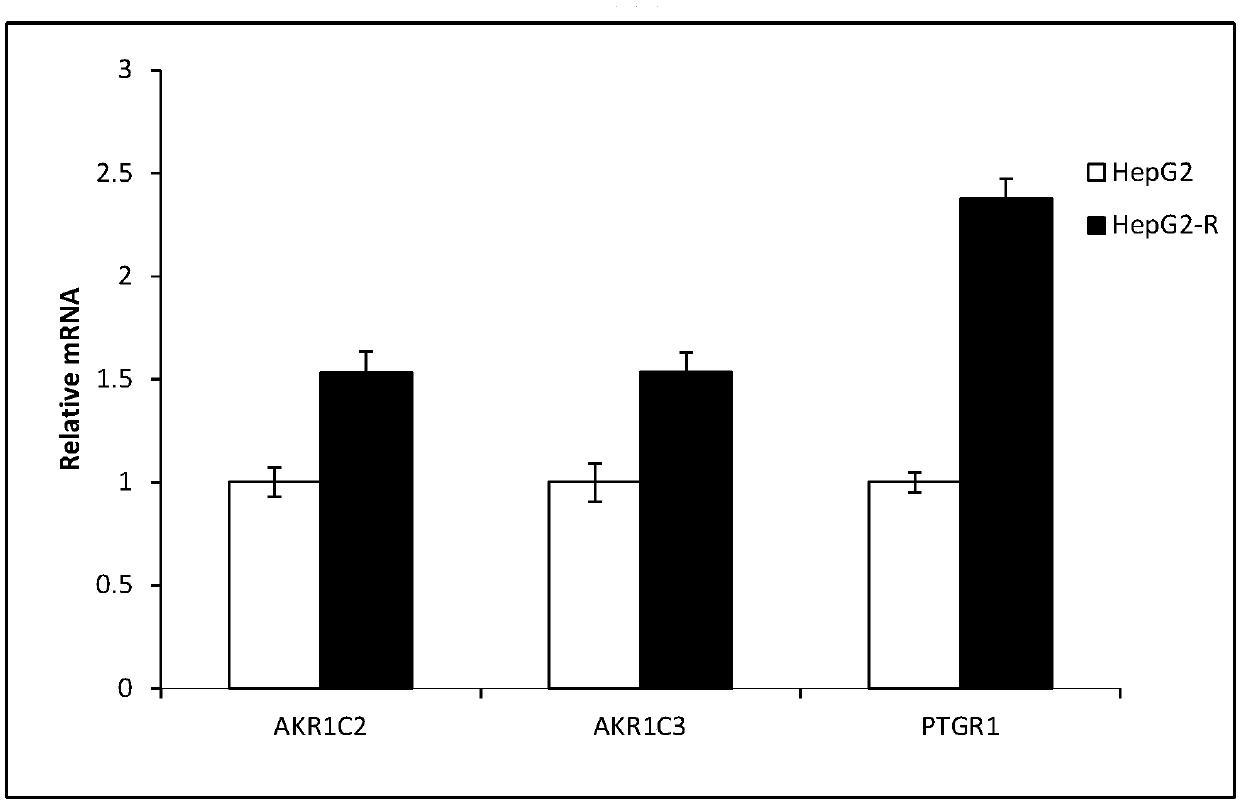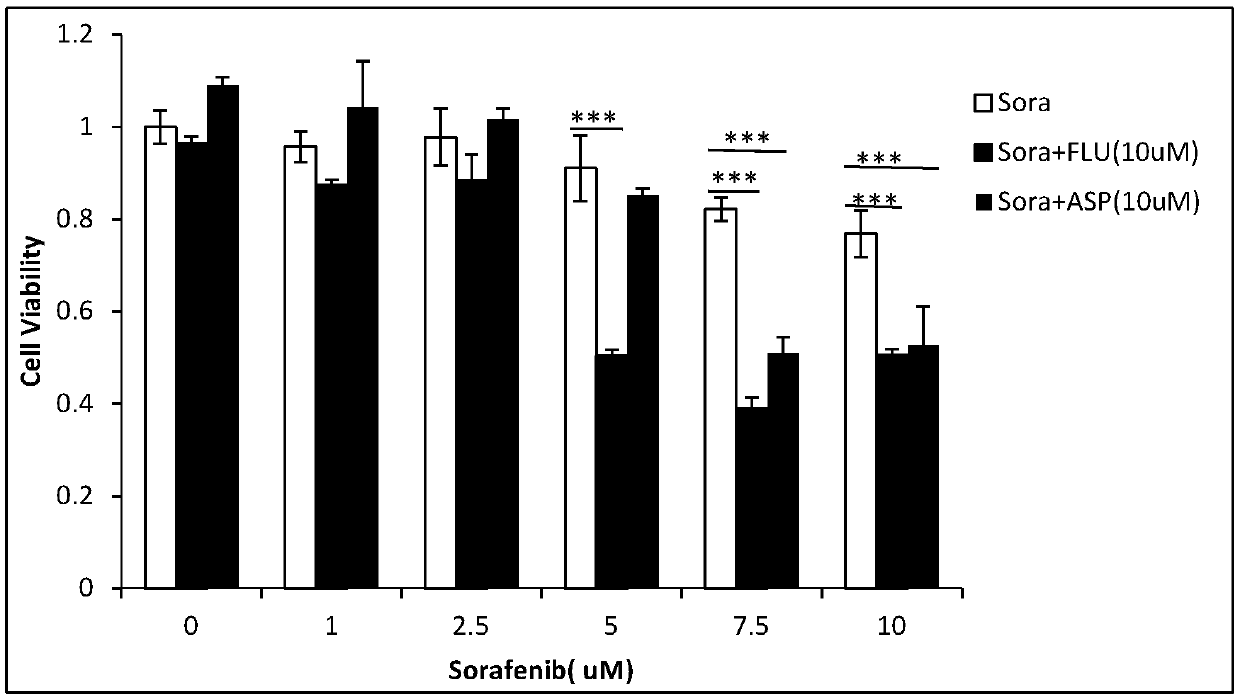Pharmaceutical composition reversing resistance of hepatoma carcinoma cells to sorafenib
A drug and mixture technology, applied in the field of cell biology and medical treatment, can solve the problems of difference in curative effect and low drug response rate
- Summary
- Abstract
- Description
- Claims
- Application Information
AI Technical Summary
Problems solved by technology
Method used
Image
Examples
Embodiment 1
[0013] Detection of expression levels of enzymes related to prostaglandin synthesis pathway in human liver cancer cell line HepG2 and acquired drug-resistant cell lines.
[0014] Human liver cancer cell line HepG2 and drug-resistant cell line (HepG2-R) were inoculated into 6-well plates, cultured in DMEM medium containing 10% fetal bovine serum, and cultured in an incubator at 37°C and 5% CO2 saturated humidity. Grow to cover more than 80% of the culture, add Trizol to lyse the cells, extract total RNA according to the literature "Single Step Method of RNA Isolation by Acid Guanidinium Thiocyanate-Phenol-Chloroform Extraction", use real-time fluorescent quantitative PCR method according to the literature "Targeting KDM1A attenuates Wnt / β-catenin signaling pathway to eliminate sorafenib-resistant stem-like cells in hepatocellular carcinoma” operating conditions to detect changes in gene mRNA levels of drug-resistant strains AKR1C2 and AKR1C3, the final results are as follows f...
Embodiment 3
[0016] Example 3 Sorafenib combined with prostaglandin synthesis pathway inhibitor inhibits the growth of HepG2 cells.
[0017] The HepG2 drug-resistant cell line was inoculated into a 96-well plate for culture, and 24 hours after inoculation, the cells were cultured with different concentrations of sorafenib and prostaglandin synthesis pathway inhibitors for 24 hours, and CellTiter- Luminescent CellViability Assay analyzes the trend of cell proliferation, the final result is as follows image 3 As shown, the combination of sorafenib (5 μM) and FLU (10 μM) can significantly inhibit cell proliferation.
PUM
 Login to View More
Login to View More Abstract
Description
Claims
Application Information
 Login to View More
Login to View More - R&D
- Intellectual Property
- Life Sciences
- Materials
- Tech Scout
- Unparalleled Data Quality
- Higher Quality Content
- 60% Fewer Hallucinations
Browse by: Latest US Patents, China's latest patents, Technical Efficacy Thesaurus, Application Domain, Technology Topic, Popular Technical Reports.
© 2025 PatSnap. All rights reserved.Legal|Privacy policy|Modern Slavery Act Transparency Statement|Sitemap|About US| Contact US: help@patsnap.com



